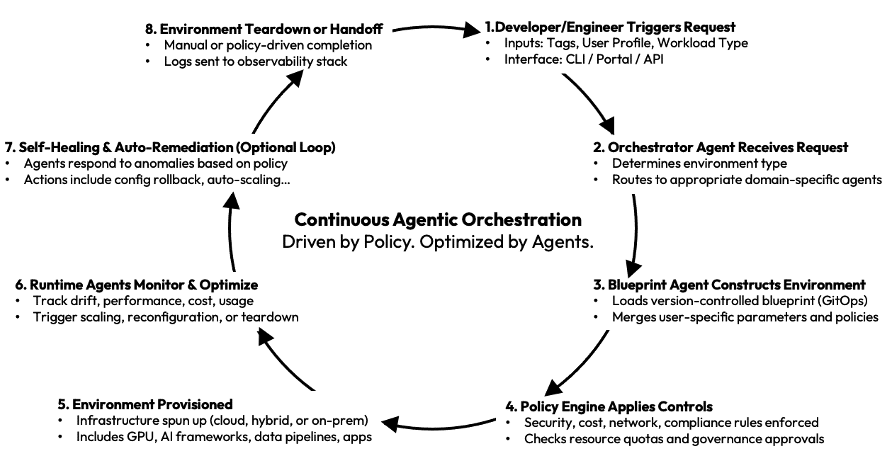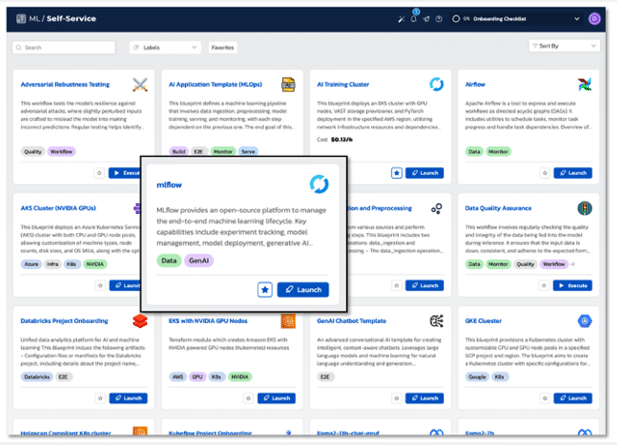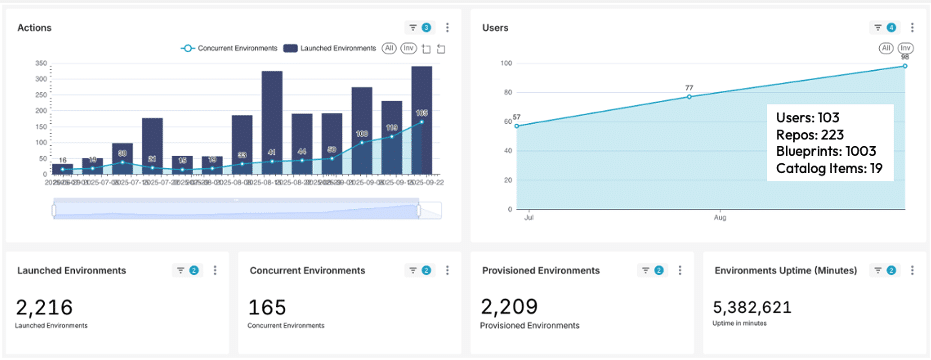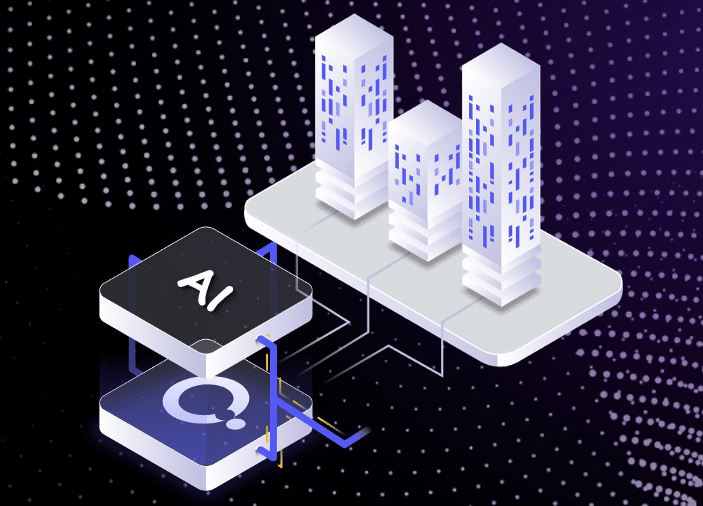Accelerating Agentic AI Workflows in Financial Services with Torque
Introduction: A Sector at the Forefront of AI Transformation.
In the highly regulated and data-intensive world of financial services and retirement planning, operational efficiency, infrastructure governance, and AI scalability are mission-critical. The sector is under immense pressure to modernize legacy systems while delivering personalized, intelligent services at speed. For leading firms in this space, the next frontier isn’t just AI adoption, but deploying autonomous, agentic systems that can execute, adapt, and optimize at scale.
Agentic AI and the Infrastructure Bottleneck
Agentic AI, systems capable of autonomous decision-making and task execution across infrastructure layers, promises transformative gains. However, deploying these systems reliably and securely requires orchestration that extends beyond conventional IT automation. Most enterprises lack the tools to manage stateful, intent-driven environments that respond dynamically to workload needs and governance rules.
| Traditional IT Automation | Agentic AI with Torque |
| Static Automation Stack | Autonomous, Intent-Driven Orchestration |
| • Scripted Provisioning | • AI Agent Interprets Workload Intent |
| • Manual Change Management | • Real-Time Policy Enforcement |
| • Limited Visibility | • Dynamic Infra Reconfiguration |
| • No Real-Time Policy Enforcement | • Self-Healing & Optimization |
A Leading Financial Services Firm’s Approach
One of the world’s foremost financial services and retirement solution providers, managing over $1.2 trillion in assets, has adopted Torque to close this gap. This firm supports more than 4.7 million customers and operates across major U.S. cities. Their objective: to transform software delivery and AI operations through scalable automation and intelligent infrastructure control.
The ‘Express Lane’ for Agentic Blueprints
The firm launched an initiative known internally as “The Express Lane Project,” using Torque’s environment-as-agent model. With governed blueprints and policy-driven automation, developers and data scientists can launch complex, GPU-intensive environments in minutes. These environments include full AI pipelines, from data ingestion to inference, provisioned securely and cost-effectively.

Embedded Agentic Capabilities in Practice.
To support complex, fast-moving AI workloads, the platform team at this financial services firm adopted a modular, agent-driven approach using Torque. Instead of relying on a monolithic control plane, they deployed specialized agents, each responsible for a discrete function: blueprint creation, cost analysis, environment lifecycle management, and drift remediation.
These agents operate autonomously but are governed by a centralized policy engine. This ensures that every infrastructure action, from provisioning to teardown, adheres to enterprise-grade security protocols and financial governance.
By distributing intelligence across these agents, the customer created a system that scales horizontally, adapts in real time, and remains compliant by design. The result is an operational model where environments evolve continuously, but control and visibility are never compromised, a critical capability as AI workloads become more dynamic and resource-intensive.
Continuous Change in AI Workloads
AI workloads are not static; they are always learning. This continuous evolution requires platforms that can dynamically respond to shifts in configuration, processing spikes, data consumption, and model behavior. Torque delivers this through intelligent policy enforcement that governs not only infrastructure provisioning but also runtime behavior.
By embedding change management into the orchestration layer, including config drift detection, agile compliance enforcement, and adaptive resource scaling, Torque ensures AI environments evolve responsibly. Governance, security, and cost controls remain intact even as workloads adapt

This reality reinforces a broader truth: it takes intelligent platforms to manage intelligent workloads. Traditional static infrastructure approaches break down under the fluid nature of agentic systems. Torque’s agent-native architecture was purpose-built for this challenge.
Self-Service at Enterprise Scale
With over 6,500 developers and 4,500 applications, delays in environment provisioning previously stalled release cycles and innovation. Torque enabled reusable, governed self-service blueprints to eliminate bottlenecks and integrate seamlessly with CI/CD workflows. This shift enabled the platform engineering team to support thousands of concurrent environments without scaling headcount.

Visibility, Reporting & Adoption Insights
Torque provides deep operational insight through built-in reporting dashboards that monitor environment utilization, user adoption, and system efficiency in real time. Platform teams can track thousands of concurrent environments, analyze blueprint usage across 200+ repositories, and observe trends in service consumption. These insights are essential for intelligent resource planning, cost governance, and scaling decisions. Over 2,200 environments were launched with uptime exceeding 5.3 million minutes, a testament to Torque’s ability to support resilient, production-grade infrastructure for AI workloads.

Strategic Outcomes
- Velocity: Reduced provisioning time from weeks to minutes, accelerating AI experimentation and time-to-insight.
- Governance: Runtime policy enforcement ensures compliance across thousands of concurrent environments.
- Efficiency: GPU utilization is maximized, and cloud waste minimized through continuous cost-aware orchestration.
- Scalability: The control plane seamlessly spans cloud, on-prem, and hybrid environments, supporting federated, agent-driven infrastructure.
- Standardization: Nested blueprints and GitOps practices enabled standardized delivery across teams using diverse IaC stacks (Terraform, Helm, CloudFormation, Kubernetes).
- Adaptability: Intelligent, self-governing environments dynamically adjust to changes in AI workloads, without compromising compliance or performance.
By operationalizing agentic AI with Torque, this global financial leader has positioned itself at the forefront of AI-enabled transformation. The case illustrates how orchestrating intelligent infrastructure, not just deploying AI, is the key to competitive advantage in the next era of digital operations.
Additional Resources Specific to this Important Use-Case:
- Web Page Use Case: Agentic AI
- Web Page Technology: GPU Stacks
- Web Page Technology: Nvidia Ai Enterprise
- Press: IBTimes – ‘Governor of Agents’: A New Control Layer for the Age of AI
- Press: Technology.org – Rethinking AI Infrastructure from the Desktop to the Data Center
- Press Release: Quali Streamlines Delivery of Agentic AI at Scale with Nvidia AI Enterprise
- Whitepaper: Securing the Future of AI
- Quali Blog: Agentic layers: The architecture behind autonomous infrastructure
- Quali Blog: Roles fade, platforms rise: The agentic shift in IT operations
- Quali Blog: Beyond GenAI: How agentic AI redefines infrastructure management
- Quali Blog: Infrastructure for Agentic AI: Why Today’s Cloud and Security Models are Not Enough
- Critical Capabilities for the Internet of AI Agents (IAIA)
- Critical Capabilities for GPU Infrastructure Automation
- Critical Capabilities for AI/Agentic Security
- Critical Capabilities for AI Workload Orchestration




